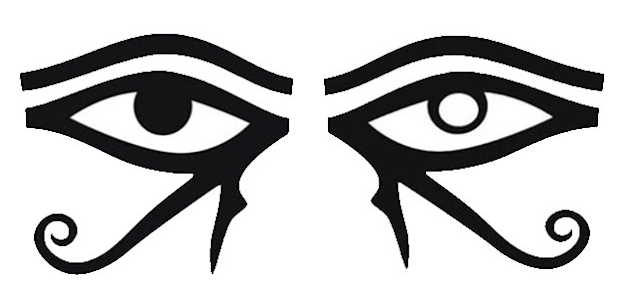Matthew 2315 “Woe to you, teachers of the law and Pharisees, you hypocrites! You travel over land and sea to win a single convert, and when you have succeeded, you make them twice as much a child of hell as you are.
15律法学者たちとファリサイ派の人々、あなたたち偽善者は不幸だ。改宗者を一人つくろうとして、海と陸を巡り歩くが、改宗者ができると、自分より倍も悪い地獄の子にしてしまうからだ。
2020年4月4日土曜日
2022年8月7日日曜日
韓国のキリスト教(かんこくのキリストきょう)は大韓民国におけるキリスト教の歴史と現状について述べる。2005年統計庁の発表によると人口の約3割がキリスト教徒で、キリスト教が最大勢力の宗教である。内訳は、プロテスタントの信者が2に対して、カトリック信者が1になっている。海外に対する宣教活動が活発なことも韓国キリスト教の特徴で、2000年にはプロテスタントだけでも10,646人の宣教師が156カ国で活動していた(カトリックは統計を公表していない)。この数字はアメリカ合衆国に次ぐ世界第2の規模である。とりわけ海外宣教に熱心なのは趙鏞基牧師率いる汝矣島(ヨイド)純福音教会で、南米や中央アジア、中東だけでなく、危険な北朝鮮にも極秘裏に潜入しているといわれる。
福音派は極めて積極的な布教活動をする為、近年では世界各地(特にイスラム教諸国)においてトラブルに巻込まれている。アフガニスタンにおける布教活動ではモスクの前でキリスト教の賛美歌を歌うなど、過激な布教活動が見られたと報道されている。2007年ターリバーン韓国人拉致事件のような事件が発生した背景には、こういった刺激的かつ攻撃的な布教活動があったのではないかとの指摘朝鮮に初めてキリスト教の宣教師が足を踏み入れたのは、文献で確認できる限りでは、1593年に文禄・慶長の役に参加していたキリシタン大名小西行長の求めに応じて朝鮮に渡ったイエズス会司祭グレゴリオ・デ・セスペデス(Gregorio de Sespedes)が最初である。しかし、彼の活動はあくまで日本軍の従軍司祭としての活動に限定されており、朝鮮の人々に布教をしたわけではなかった。しかし、この戦役において小西はジュリアおたあと呼ばれる朝鮮人養女を得ており、彼女は小西によって行き届いた教育を受け、養父にならって受洗した。よって、歴史上初の朝鮮人キリスト教徒(受洗者)は彼女であると考えられている。
https://tokumei10.blogspot.com/2022/08/2.html
LoLLoLLoLLoLLoLLoLLoLLoLLoLLoLLoLLoLLoLLoLLoLLoLLoLLoL




宣教w
返信削除選挙w
戦況ww
https://en.m.wikipedia.org/wiki/Donation_of_Constantine
返信削除The Donation of Constantine (Latin: Donatio Constantini) is a forged Roman imperial decree by which the 4th-century emperor Constantine the Great supposedly transferred authority over Rome and the western part of the Roman Empire to the Pope. Composed probably in the 8th century, it was used, especially in the 13th century, in support of claims of political authority by the papacy.[1]
...
Investigation
During the Middle Ages, the Donation was widely accepted as authentic, although Otto III, Holy Roman Emperor did possibly raise suspicions of the document "in letters of gold" as a forgery, in making a gift to the See of Rome.[13] It was not until the mid-15th century, with the revival of Classical scholarship and textual criticism, that humanists, and eventually the papal bureaucracy, began to realize that the document could not possibly be genuine. Cardinal Nicholas of Cusa declared it to be a forgery[18][19] and spoke of it as an apocryphal work.
Later, the Catholic priest Lorenzo Valla argued in his philological study of the text that the language used in manuscript could not be dated to the 4th century.[20] The language of the text suggests that the manuscript can most likely be dated to the 8th century. Valla believed the forgery to be so obvious that he suspected that the Church knew the document to be inauthentic. Valla further argued that papal usurpation of temporal power had corrupted the church, caused the wars of Italy, and reinforced the "overbearing, barbarous, tyrannical priestly domination."[20]
Independently of both Cusa and Valla, Reginald Pecocke, Bishop of Chichester (1450–57), reached a similar conclusion. Among the indications that the Donation is a forgery are its language and the fact that, while certain imperial-era formulas are used in the text, some of the Latin in the document could not have been written in the 4th century; anachronistic terms such as "fief" were used. Also, the purported date of the document is inconsistent with the content of the document itself, as it refers both to the fourth consulate of Constantine (315) as well as the consulate of Gallicanus (317).
Pope Pius II wrote a tract in 1453, five years before becoming pope, to show that though the Donation was a forgery, the papacy owed its lands to Charlemagne and its powers of the keys to Peter; however, he did not publish it.[21]
Contemporary opponents of papal powers in Italy emphasized the primacy of civil law and civil jurisdiction, now firmly embodied once again in the Justinian Corpus Juris Civilis. The Florentine chronicler Giovanni Cavalcanti reported that, in the very year of Valla's treatise, Filippo Maria Visconti, Duke of Milan, made diplomatic overtures toward Cosimo de' Medici in Florence, proposing an alliance against the pope. In reference to the Donation, Visconti wrote: "It so happens that even if Constantine consigned to Sylvester so many and such rich gifts – which is doubtful, because such a privilege can nowhere be found – he could only have granted them for his lifetime: the empire takes precedence over any lordship."[citation needed]
Later, scholars further demonstrated that other elements, such as Sylvester's curing of Constantine, are legends which originated at a later time. Wolfram Setz, a recent editor of Valla's work, has affirmed that at the time of Valla's refutation, Constantine's alleged "donation" was no longer a matter of contemporary relevance in political theory and that it simply provided an opportunity for an exercise in legal rhetoric.[22]
...